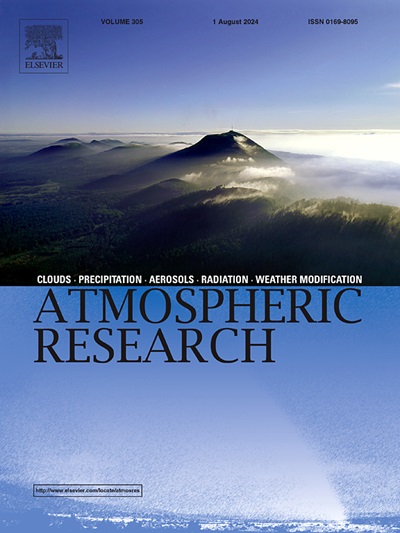比较高臭氧和低臭氧及PM 2的大气化学的机器学习和箱形建模方法。₅集
IF 4.4
2区 地球科学
Q1 METEOROLOGY & ATMOSPHERIC SCIENCES
引用次数: 0
摘要
高水平的臭氧(O₃)和颗粒物(PM)已经成为世界各地城市地区的重大环境挑战,尤其是在中国这样的发展中国家。全面了解污染期和非污染期的大气化学对有效的污染控制策略至关重要。在这项研究中,我们分析了中国南京在高、低O₃和PM₂期间的活性大气气体(VOCs, NOₓ和O₃)。₅集。采用0-D大气模型框架(F0AM)模拟OH反应性、ROx自由基收支、ROx自由基化学和O₃相关过程。我们发现,在高臭氧期(HOE),模型衍生的二次反应物和未受约束的原生烃对总OH反应活性的贡献显著高于低臭氧期(LOE),为50.5 %。高PM 2时芳香族化合物对OH反应性的贡献更大。在低PM 2时,₅发作(HPME, 20 %)。₅情节(LPME, 14.5 %)。与LOE相比,在HOE期间,ROx自由基的回收率大约是初级产量的2.5至7.5倍。此外,RO₂ + NO反应在HOE期间每天平均O₃产量中所占的份额(50 %)比LOE期间(46 %)要大。相反,在LOE期间,O₃光解作用对每日平均O₃损失的贡献(37 %)大于HOE期间(33 %)。最后,随机森林模型显示,气象和大气化学条件共同促进臭氧形成约63% %(其他部分可以用前体的浓度来解释)。这项研究揭示了各种大气条件和污染物如何相互作用形成二次污染,为更有效的污染控制策略提供了有价值的见解。本文章由计算机程序翻译,如有差异,请以英文原文为准。
A machine learning and box modeling approach to comparing the atmospheric chemistry of high- and low-ozone and PM₂.₅ episodes
High levels of ozone (O₃) and particulate matter (PM) have become significant environmental challenges in urban areas worldwide, particularly in developing countries such as China. A comprehensive understanding of atmospheric chemistry during both polluted and non-polluted periods is essential for effective pollution control strategies. In this study, we analyzed reactive atmospheric gases (VOCs, NOₓ, and O₃) in Nanjing, China, during high and low O₃ and PM₂.₅ episodes. The Framework for 0-D Atmospheric Modeling (F0AM) was employed to simulate OH reactivity, the ROx radical budget, ROx radical chemistry, and O₃-related processes. We found that the contribution of model-derived secondary reactants and unconstrained primary hydrocarbons to total OH reactivity was significantly higher during high ozone episodes (HOE) at 50.5 %, compared to 38.8 % during low ozone episodes (LOE). Aromatic compounds contributed more to OH reactivity during high PM₂.₅ episodes (HPME, 20 %) than during low PM₂.₅ episodes (LPME, 14.5 %). The ROx radical recycling rates were approximately 2.5 to 7.5 times higher than primary production rates during HOE, compared to LOE. Additionally, the RO₂ + NO reaction accounted for a larger share of daily mean O₃ production during HOE (50 %) than during LOE (46 %). Conversely, O₃ photolysis contributed more to daily mean O₃ loss during LOE (37 %) than during HOE (33 %). Finally, a Random Forest model revealed that meteorological and atmospheric chemical conditions together enhanced ozone formation by approximately 63 % (other parts could be explained by the concentrations of precursors). This study sheds light on how various atmospheric conditions and pollutants interact to form secondary pollution, offering valuable insights for more effective pollution control strategies.
求助全文
通过发布文献求助,成功后即可免费获取论文全文。
去求助
来源期刊

Atmospheric Research
地学-气象与大气科学
CiteScore
9.40
自引率
10.90%
发文量
460
审稿时长
47 days
期刊介绍:
The journal publishes scientific papers (research papers, review articles, letters and notes) dealing with the part of the atmosphere where meteorological events occur. Attention is given to all processes extending from the earth surface to the tropopause, but special emphasis continues to be devoted to the physics of clouds, mesoscale meteorology and air pollution, i.e. atmospheric aerosols; microphysical processes; cloud dynamics and thermodynamics; numerical simulation, climatology, climate change and weather modification.
 求助内容:
求助内容: 应助结果提醒方式:
应助结果提醒方式:


